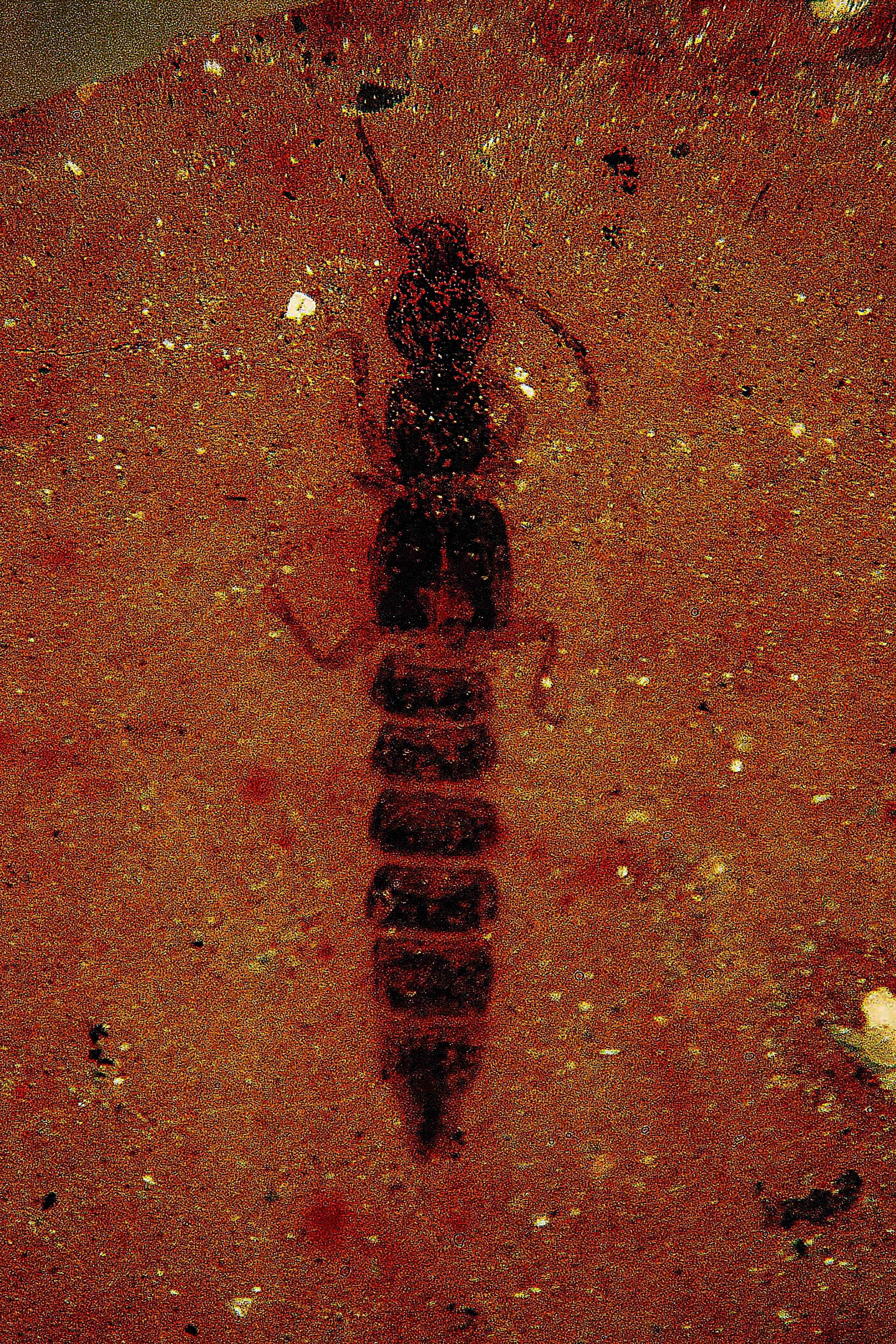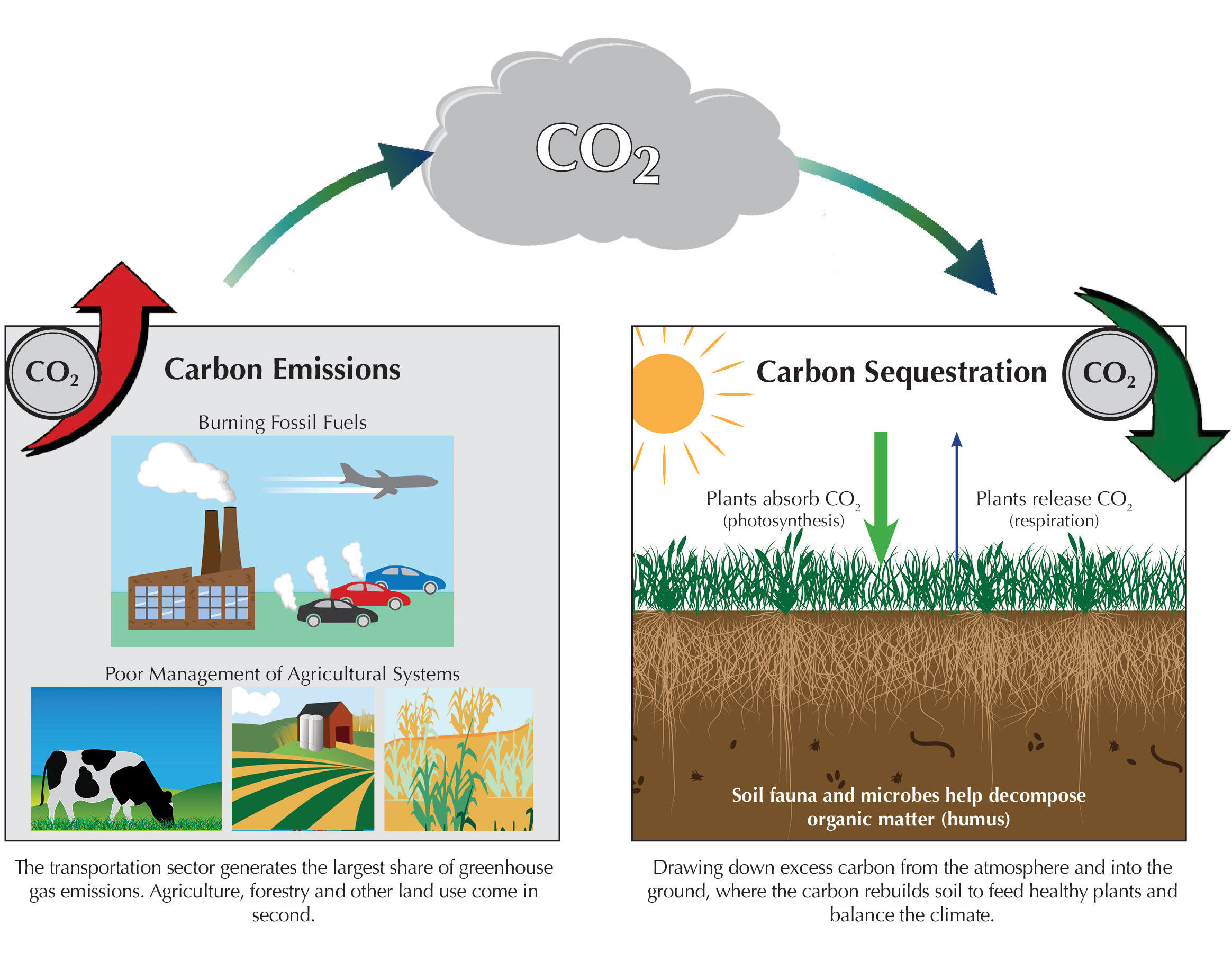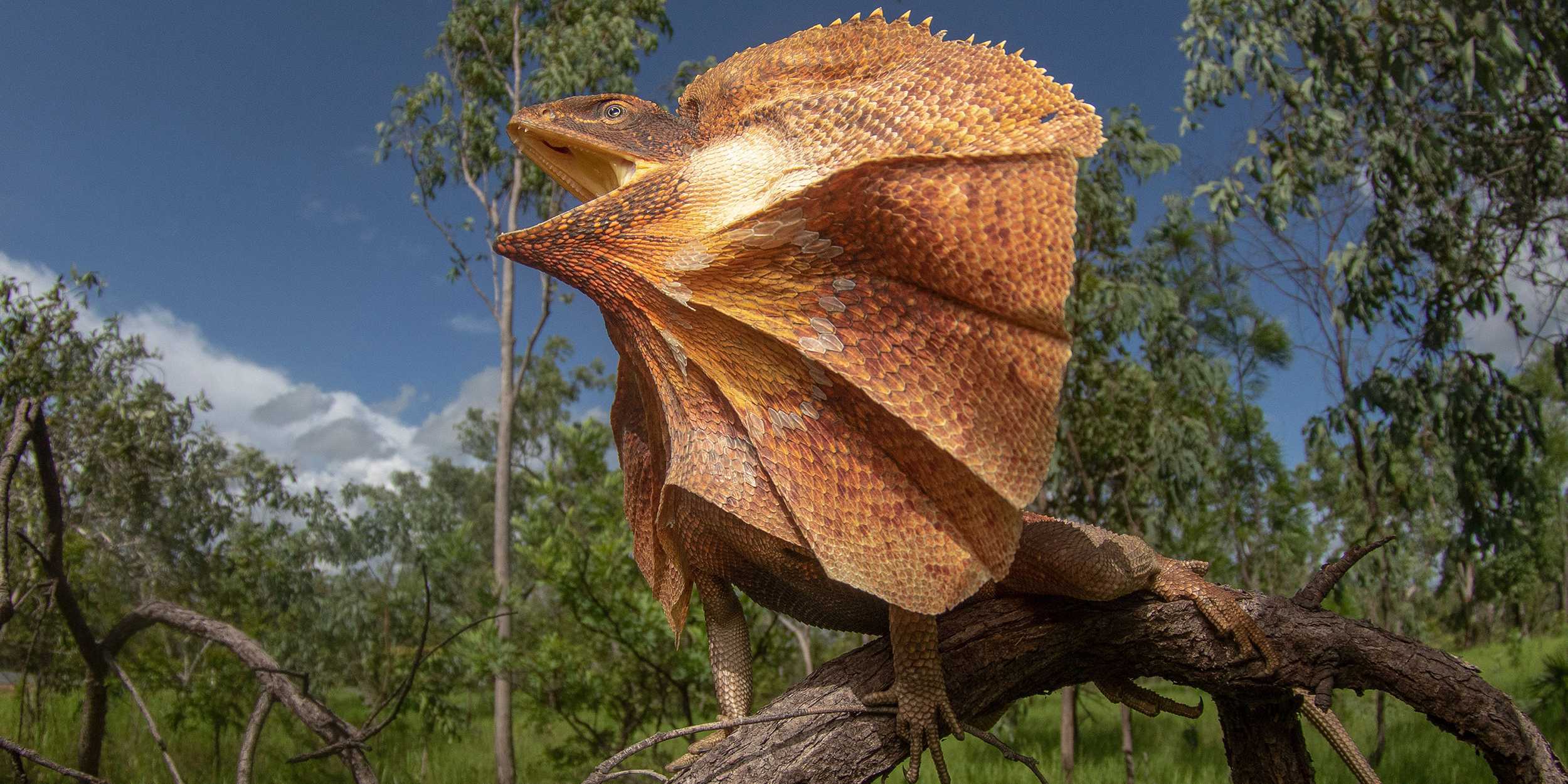Brachiopods were evolving in new directions but this did not turn into evolutionary success in terms of the numbers of species, researchers at the University of Bristol, the Open University, and the China University of Geosciences have found.
Tag: Biodiversity
Wetland wonders unfold: aerial systems shed light on ecosystem services
A cutting-edge study revolutionizes coastal wetland mapping by integrating unmanned aerial systems with light detection and ranging (LiDAR) and multispectral sensors. This innovative approach provides detailed elevation data and vegetation analysis, enabling highly accurate classifications of diverse wetland types. The research advances conservation by offering a scalable, efficient, and cost-effective method that is instrumental in climate change mitigation strategies and informs policy-making for coastal resilience.

Coffee Producers Capture Rare Amazon Weasel on Video
A group of coffee producers has filmed an extremely rare small carnivore, the Amazon weasel (Neogale africana), near their shade-grown plots as part of a citizen science monitoring program. This species has never previously been recorded in Bolivia.
Global patterns of Rhododendron diversity explained by island biogeography theory and habitat heterogeneity
• Global Rhododendron hotspots are mainly distributed in the Hengduan Mountains of southwestern China and the southern regions of the Himalayas.
• Rhododendron diversity patterns were most strongly explained by proxies of island biogeography theory (i.e., mountain area) and habitat heterogeneity (i.e., elevation range).
World Nature Conservation Day: Promoting Environmental Awareness and Action
July 28 marks World Nature Conservation Day, a global initiative to raise awareness about protecting our natural environment.
From space to swamp: innovative AI method classifies mangrove species with unprecedented accuracy
Mangrove ecosystems, vital for biodiversity and climate change mitigation, face challenges in monitoring and conservation due to their complex species composition. A new study introduces an AI-driven approach to classify mangrove species with remarkable accuracy, potentially transforming conservation efforts.
Leading-Edge Model Predicts Impact of River Plants on Flood Level
The research team at the Korea Institute of Civil Engineering and Building Technology (KICT) has developed a technology for quantifying the effect of river vegetation patches on flood level changes to aid in better decision-making of river management for balancing ecological benefits and flood mitigation.
Researchers Identify Priority Areas That Deliver on Climate Change, Biodiversity and Health
To meet the imperative of the Kunming-Montreal Global Biodiversity Framework target, which seeks to protect at least 30 percent of the planet by 2030, researchers in an essay in PLOS Biology argue that “conservation areas need to be large enough to encompass functioning ecosystems and their associated biodiversity, and located in areas of high ecological integrity.”
New Fossil Bovids from Kromdraai
New Fossil Bovids from Kromdraai shed light on South Africa’s ancient ecosystems.
Bhutan Hosts Summit Targeting $1 Billion USD for the Conservation of Tiger Landscapes
“Tigers are recovering but this success is fragile.” Joe Walston, EVP of WCS Global
Florida Wildlife Corridor Eases Worst Impacts of Climate Change
Florida is projected to lose 3.5 million acres of land to development by 2070. A new study highlights how Florida can buffer itself against both climate change and population pressures by conserving the remaining 8 million acres of “opportunity areas” within the Florida Wildlife Corridor (FLWC), the only designated statewide corridor in the U.S.
New Study Shows How the Florida Wildlife Corridor Can Mitigate the Worst Impacts of Climate Change
As wildfires, floods and other climate disasters spread across the country, a first-of-its-kind study
finds that Florida’s ambitious Wildlife Corridor has the potential to shield the state from similar
threats.

New fossil rove beetle is a first in AfricaNew fossil rove beetle is a first in Africa
A new species of fossil staphylinine rove beetle from Orapa.
China’s Urban Jungles: How City Parks are Winning the Battle Against Concrete
Recent studies highlight a significant transformation in China’s urban landscape, where the greening of city cores is compensating for vegetation loss in expanding urban areas.
Gardeners can help identify potentially invasive plants
The critical role of gardeners in identifying ‘future invaders’ – ornamental plants that could become invasive species – has been revealed by researchers from the University of Reading and the Royal Horticultural Society.
Biodiversity appears to strongly suppress pathogens and pests in many plant and animal systems, but this “dilution effect” can vary strikingly in magnitude
This study uses forest inventory data from over 25,000 plots to show that the prevalence of tree pests is jointly controlled by the diversity and phylogenetic composition of forests.

New study shows improved rangeland grazing management leads to substantial sequestration of carbon
CarbonSolve, leading global developer of rangeland carbon credits, announces results of a long-term study that presents the first evidence that improved grazing practices implemented at the scale of traditional pastoralist migrations can remove a significant volume of greenhouse gases to soil carbon.
NSU Researcher Helps International Team Create Plan to Protect the Biodiversity of U.S. Waters
Studying the world’s oceans can be difficult – an NSU researcher lead a team that is working to do just that.
Online digital data and AI for monitoring biodiversity
The random information posted online could be used to generate information about biodiversity and its conservation.
Climate change has brought forward the flowering period in Doñana National Park by 22 days
A team at the University of Seville has studied trends in the flowering date of around fifty plant species over the last 35 years in Doñana National Park.
Is the Amazon forest approaching a tipping point?
Global warming may be interacting with regional rainfall and deforestation to accelerate forest loss in the Amazon, pushing it towards partial or total collapse.
Two new freshwater fungi species in China enhance biodiversity knowledge
Researchers have discovered two new freshwater hyphomycete (mould) species, Acrogenospora alangii and Conioscypha yunnanensis, in southwestern China.
NUS scientists develop novel method to estimate biodiversity loss in Singapore over the past two centuries
Scientists from the National University of Singapore (NUS) employed novel statistical methods to reveal the extent of biodiversity loss in Singapore over the past two centuries.
MSU’s ‘Robin Hood’ approach for tracking biodiversity
Researchers at Michigan State University have developed a framework that can help scientists understand trends in biodiversity by using data from well-characterized species to provide insights on data-deficient species. The framework is published in the Journal of Animal Ecology, which provides a how-to guide for researchers and practitioners to implement.
Roughly one in seven species are classified as data deficient by the International Union for Conservation of Nature, or IUCN.
That means these species lack sufficient data for the IUCN to assert a conservation status and, consequently, their need for conservation interventions. With the new framework, researchers and their partners in conservation and wildlife management could better identify which data-deficient species are threatened and in need of help.
AI models identify biodiversity from animal sounds in tropical rainforests
Tropical forests are among the most important habitats on our planet. They are characterised by extremely high species diversity and play an eminent role in the global carbon cycle and the world climate.
Explosion in fish biodiversity due to genetic recycling
Scientists show the extraordinary diversity of cichlid fish in Africa’s Lake Victoria was made possible by ‘genetic recycling’ – repeated cycles of new species appearing and rapidly adapting to different roles in the ecosystem.
UTA research: Wildlife loss five times slower in protected areas
Protecting large areas of land from human activity can help stem the tide of biodiversity loss, especially for vertebrates like amphibians, reptiles, mammals and birds, according to a new study in Nature.
Protecting lands slows biodiversity loss among vertebrates by five times
Protecting large swaths of Earth’s land can help stem the tide of biodiversity loss—including for vertebrates like amphibians, reptiles, mammals and birds, according to a new study published in Nature Sept. 27.
New Research Reveals Dynamic Factors Shaping Biodiversity at Small Scales
Researchers studying arboreal ants in a Florida forest explore the fundamental question of how resource availability and competition shape biodiversity.
Insights into the biodiversity of annelids in the world’s largest deep-sea mineral exploration region
The demand for rare raw materials, such as cobalt, is fuelling the exploration of the deep-sea floor for mining.
The pace of climate-driven extinction is accelerating, a UArizona-led study shows
Climate change is causing extinctions at an increasing rate, a new study by the University of Arizona researchers shows. They surveyed populations of the Yarrow’s spiny lizard in 18 mountain ranges in southeastern Arizona and analyzed the rate of climate-related extinction over time.
Ohio State leads new global climate center on AI for biodiversity change
The Ohio State University will lead a new multimillion dollar international center devoted to using artificial intelligence to help understand climate impacts on biodiversity.
Study shows replanting logged forests with diverse mixtures of seedlings accelerates restoration
Satellite observations of one of the world’s biggest ecological experiments on the island of Borneo have revealed that replanting logged forests with diverse mixtures of seedlings can significantly accelerate their recovery. The results have been published today in the journal Science Advances.
Plant-based food alternatives could support a shift to global sustainability
Replacing 50% of meat and milk products with plant-based alternatives by 2050 can reduce agriculture and land use related greenhouse gas (GHG) emissions by 31% and halt the degradation of forest and natural land, according to new research.
Discovering the unexpected way protected areas contribute to biodiversity
A study published in Nature found that, while protected areas in Southeast Asia were shown to be good for animals inside their borders, as expected, that protection also extended to nearby unprotected areas, which was a surprise.
Pollutants are important to biodiversity’s role in spread of wildlife diseases
Conventional wisdom among ecologists holds that the more species there are inhabiting an ecosystem, the less vulnerable any one species will be to a threat like a parasite. A new study of tadpoles at the University of Wisconsin–Madison illustrates how overlapping biological and environmental factors can complicate how we value protecting diverse animal communities. The researchers found that environmental pollutants like road salt influence whether increased biodiversity helps or hinders disease outbreaks in wildlife, which can complicate how we value protecting diverse animal communities.
Hidden moles in hidden holes
Scientists have identified two types of mole which they believe have been living undiscovered in the mountains of eastern Turkey for as many as 3 million years.
Meet the Persian Gold Tarantula: a new species discovery just on time for Tarantula Appreciation Day 2023
The Persian Gold Tarantula (Chaetopelma persianum) is a newly described species recently discovered in northwestern Iran. In fact, the “woolly, golden hairs” the scientists observed and examined on a single specimen, were one of the features so unique that it was not necessary for additional individuals to be collected and physically studied.
Two thirds of the world’s biodiversity lives in the soil
Soil is the most species-rich habitat on earth. This is the conclusion of an overview study by a Swiss research team. According to the study, two thirds of all known species live in the soil.
Tropical trees use social distancing to maintain biodiversity
Tropical forests often harbor hundreds of species of trees in a square mile, but scientists often struggle to understand how such a diversity of species can coexist.
Small-winged and lighter colored butterflies likely to be at greatest threat from climate change
Butterflies with smaller or lighter coloured wings are likely to be ‘losers’ when it comes to climate change, with the Lycaenidae family, which contains over 6,000 species of butterflies, the majority of which live in the tropics, found to be particularly vulnerable.
Shell game: Researchers find an uncommon wild bee thriving by nesting in a localized bonanza of old snail shells
Biologists at McMaster University studying the local abundance of a typically uncommon wild native bee have found a clear link between the unusual population spike and the concentration of a non-native snail in the same area.

Why there are no kangaroos in Bali (and no tigers in Australia)
If you travel to Bali, you won’t see a cockatoo, but if you go to the neighbouring island of Lombok, you will. The situation is similar with marsupials: Australia is home to numerous marsupial species, such as the kangaroo and the koala. The further west you go, the sparser they become.
Similar to humans, elephants also vary what they eat for dinner every night
Elephants eat plants. That’s common knowledge to biologists and animal-loving schoolchildren alike. Yet figuring out exactly what kind of plants the iconic herbivores eat is more complicated.
How the use of chemicals and biodiversity loss are connected
Science does not take a deep enough look at chemicals in the environment as one of the causes of the decline in biodiversity.
Study finds human impact on wildlife even in protected areas
By 2030, if the 30 by 30 initiative supported by more than 100 countries is successful, 30% of our land and ocean ecosystems will be designated protected areas meant to safeguard biodiversity and help limit the impacts of climate change.
WCS Media Briefing: Can Humanity Adapt to a Changing Climate? A Roadmap Forward and Lessons From the Field
A panel of experts will hold a WCS media briefing on climate adaptation, presenting the results of a new paper on the need for making ecological integrity a centerpiece of adaptation policy, such as UN frameworks on climate, biodiversity, and sustainable development.
Previously Overlooked Algae Toxin Widespread in Southern Indian River Lagoon
Pseudo-nitzschia spp., an algae that produces the neurotoxin domoic acid, can bioaccumulate within food webs causing harm to humans and animals. A molecular study of Florida’s Indian River Lagoon shows this algae was present in 87 percent of the water samples collected. All isolates showed toxicity, and domoic acid was found in 47 percent of surface water samples. As a nursery for many organisms that supports a high amount of biodiversity, the presence of domoic acid could negatively impact the lagoon system.
ASU establishes ʻĀkoʻakoʻa, a new collaborative effort to seed renewed connection between human and coral communities in Hawaiʻi
With a group of core partners, Arizona State University is creating a new $25 million collaboration to preserve and restore vitality to Hawaiʻi’s coral reefs and the health of its coastlines.
Nature is changing as land abandonment increases
A new perspective piece in Science shows that abandoned lands could be both an opportunity and a threat for biodiversity, and highlights why abandoned lands are critical in the assessment of global restoration and conservation targets.